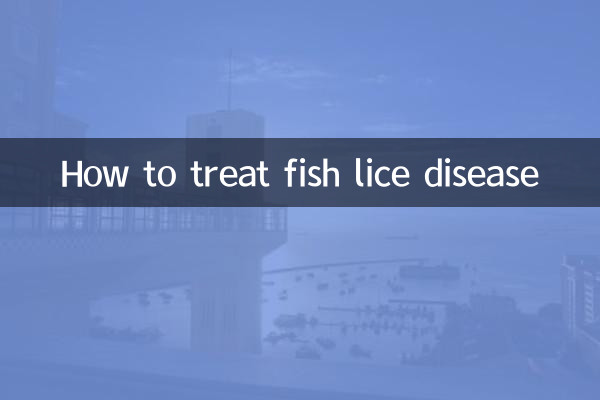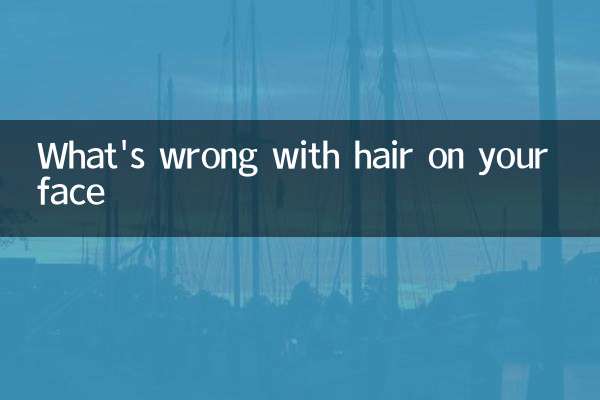How to treat fish lice disease
Fish lice disease is a common parasitic disease in aquaculture. It is mainly caused by parasitic fish lice (such as Argulus spp.), and in severe cases can cause fish death. The following are the treatment methods and preventive measures for fish lice disease, which are compiled in combination with popular topics and hot contents on the entire network in the past 10 days.
1. Symptom identification of fish lice disease

The main symptoms of fish lice include:
| symptom | describe |
|---|---|
| Insect bodies can be seen on the surface of fish | Fish lice are usually attached to the surface or gills of the fish and can be seen by the naked eye. |
| Fish rubs objects | Sick fish frequently rubbed the bottom or wall of the pond to try to get rid of parasites |
| Congestion or ulcers on the surface | Parasitic areas may have redness, bleeding, or secondary infections |
| Loss of appetite | Sick fish manifests as anorexia and decreased vitality |
2. Treatment methods for fish lice disease
According to recent hot discussions and expert suggestions from the entire network, the treatment of fish lice disease mainly includes the following methods:
| Treatment method | Operation steps | Things to note |
|---|---|---|
| Physical Clearance | Use tweezers to manually remove fish lice on the surface of the fish | Suitable for small amounts of parasites, be careful to avoid damaging the fish |
| Medicinal bath treatment | Soak with Dibaicheng (0.2-0.5 mg/L) or potassium permanganate (10-20 mg/L) for 15-30 minutes | Strictly control concentration to avoid drug damage |
| Salt bath | Soak the sick fish in 3% salt water for 5-10 minutes | It may be sensitive to some fish species, and the reaction needs to be observed |
| Environmental processing | Sprinkle the entire pool of worms (0.1-0.2 mg/L) | Accurate dosage needs to be calculated to avoid harming beneficial organisms |
3. Preventive measures
Preventing fish lice disease is more important than treating it. Here are the prevention methods recommended in recent hot discussions:
| Preventive measures | Specific operations |
|---|---|
| Water quality management | Keep water clean, change water regularly, and maintain a good water environment |
| Quarantine | Newly introduced fish species need to be isolated and observed for 7-10 days |
| Biological prevention and control | Properly mix insect-eating fish (such as some loaches) |
| Regular inspections | Check the fish surface every week, and deal with it in time in early detection |
4. Summary of recent hot topic discussions
According to the popular topics on the entire network for the past 10 days, the following are the latest discussion points about the treatment of fish lice:
| Hot Topics | Key points of discussion |
|---|---|
| New methods of biological control | Certain studies propose the use of specific microbial preparations to control fish lice |
| Environmentally friendly drug research and development | Application of plant extracts (such as matrine) in fish lice control |
| Drug resistance issues | Fish lice are reported to be resistant to traditional drugs in some areas |
| Comprehensive prevention and control plan | Emphasize comprehensive management strategies with prevention as the main and treatment as the auxiliary |
5. Treatment precautions
1. Accurate diagnosis is required before treatment to avoid misdiagnosis and mistreatment
2. When taking medicine, the influence of water temperature, pH and other factors should be considered.
3. Feeding should be stopped during treatment to reduce the burden on the fish
4. Severely infected fish should be isolated in time to prevent transmission
5. After treatment, close observation of fish reactions and adjust the treatment plan if necessary
6. Summary
The treatment of fish lice disease requires the selection of appropriate methods based on the specific situation, combining physical removal, drug treatment and environmental management. Recent hot discussions have emphasized the development trend of prevention-oriented and environmentally friendly prevention and control methods. Breeders should strengthen daily management, conduct regular inspections, and promptly detect and deal with them in advance in order to effectively control the occurrence and spread of fish lice.

check the details

check the details